
Anubias Barteri - Aquatic Loose Live Plant
$44
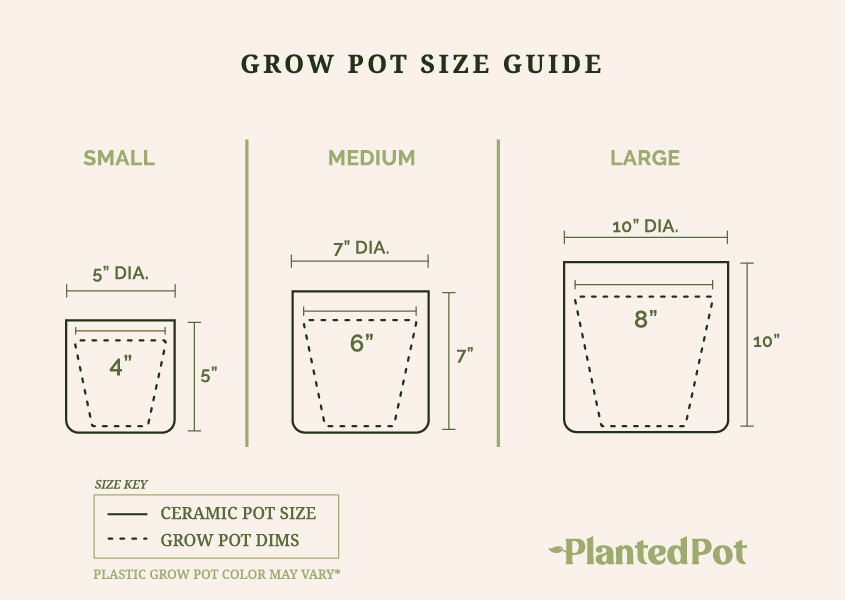 Plastic grow pots come in different colors, you may receive a black or rust colored pot.
Plastic grow pots come in different colors, you may receive a black or rust colored pot.
Want to be notified when this product is back in stock?
Known to be symbols of good luck, Jade Plants are a type of succulent that is easy and carefree to grow, blooming bright, oval-shaped, green leaves. Similar to jade jewelry, Jade Plants can be ornate yet subtle, complementing any room nicely. Since it belongs to the succulent family, taking care of a Jade Plant is a breeze. This plant requires minimal watering, full sunlight, and a balanced, water-soluble fertilizer. If you are looking for a small plant that promises a large amount of good luck, the Jade Plant is for you!
Medium light. 2 to 3 watts per gallon provided by a fluorescent fixture with daylight bulbs (5000-7000°K).
This plant grows submerged in water.
72°-82°F (water temperature)
Related Products
Anubias Barteri
You may never find an easier plant to care for than the Anubias Barteri. This aquatic species get all the water and nutrients it needs living in an enclosed, fluorescently lit aquarium. With little to no hands-on care required, this plant ranks among the most popular aquarium plants on the market.
Anubias Barteri’s claim to fame is its easygoing nature, making it an ideal choice if you’ve never had an aquarium plant before. Experienced aquarists love the Anubias Barteri, not just because it’s easy to care for but also because aquatic plants help to keep the tank environment clean and healthy.
What is an Anubias Barteri?
Anubias Barteri var. Barteri is a freshwater aquarium plant known as the Anubias Barteri, Round-leaf Anubias, or Broad-leaf Anubias. This species traces its roots (literally) to the rainforest rivers of West Africa. In nature, they are often found attached to rocks and driftwood, either partially submerged or fully underwater.
Anubias are meant to be grown in aquariums, sharing the environment with fish and other plants. This creates a symbiotic ecosystem in which the plants provide oxygen to the fish, and the fish, in turn, provide CO2 and biowaste fertilizer for the plant. While it is possible to grow an Anubias Barteri on its own, you will need to provide extra CO2 and a specially-designed aquatic substrate to do so.
Plant Size
Anubias Barteri grows 9-17 inches tall, making it ideal for the rear of your aquarium. There, it can provide a backdrop for smaller mosses and carpet plants. The leaves grow 2.5–9 inches long and 1.5–4 inches wide.
Lighting
Anubias can tolerate any level of lighting except pitch black. More light leads to faster growth and larger leaves, but even in the dimmest corner of your aquarium, Anubias will grow at a slow and steady pace.
Watering
Since Anubias Barteri lives in water, there’s no need to worry about maintaining a watering schedule. You can simply drop your Anubias Barteri into an aquarium, and just like that, your watering duties are finished!
Anubias plants can survive in water with pH levels between 5.5 and 9.0. However, they do best when the water has a pH of 6.5-7.5, which is also the optimal range for most aquarium fish. To prevent algae growth, which can rot the leaves, keep a steady current going in your tank.
Temperature
In keeping with its unfussy nature, these plants tolerate a wide range of temperatures. The ideal range is 72-82° F, though most room-temperature tanks will be just fine.
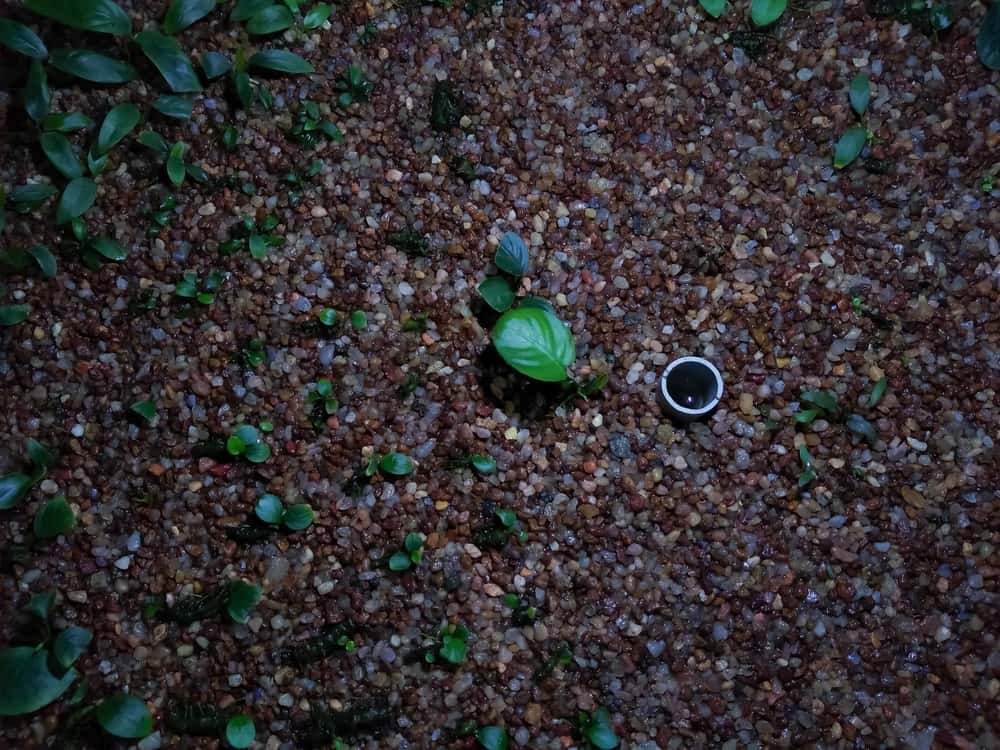
Why Choose an Anubias Barteri for Your Home?
Anubias Barteri is the plant of choice for aquarium keepers. The most obvious reason for this is how easy it is to care for these plants. However, the benefits of Anubias Barteri go far beyond its simple cultivation. Adding an Anubias to your tank enriches the aquarium’s entire ecosystem.
Aquarium Health
Anubias Barteri keeps your aquarium’s population healthy and clean. As all plants do, this one produces oxygen through photosynthesis. Oxygenating your aquarium water is critical for the health of any animal species that live in it. In turn, fish and crustaceans release the CO2 that plants need to survive.
Most terrestrial plants get nutrients from the soil, but aquarium plants absorb fish waste, uneaten fish food, and other organic debris. This mutually beneficial relationship between Anubias Barteri and fish promotes plant growth and keeps the tank clean.
Compatible With Any Species
Most domestic fish, the Cichlid and the Goldfish have a nasty reputation for eating aquarium plants. The Anubias Barteri’s robust leaves are too thick and leathery for fish to eat. No need to worry about your fish nibbling off pieces of the plant, spoiling the appearance of your aquarium.
Are Anubias Barteri Plants Good Indoors & Outdoors?
This plant must be at least partially submerged in water to survive. They are hardy enough to withstand most environments. However, it is best to keep your Anubias Barteri indoors in aquariums or paludariums (a mix between an aquarium and a terrarium). Keeping your Anubias indoors allows you to exercise greater control over its environment.
Are Anubias Barteri Plants Pet and Children Friendly?
There is no evidence to suggest that Anubias Barteri is toxic to humans or house pets. If you’re still concerned about your kids or pets sampling the Anubias, remember that they are well-protected in their underwater environment.
Most house pets are famously averse to water (try bathing them), so it’s very unlikely that your cat or dog would try to eat an aquatic plant. Still, it’s a good idea to keep your aquarium out of reach from your kids and pets for the sake of the fish. Curious cats and kids might get the urge to go fishing.
As far as aquatic pets, this plant greatly benefits them due to its oxygenating properties. Some believe cutting the rhizome (rootstalk) of an Anubias plant will release sap into the water and poison certain species, namely shrimp. This is false. While the sap in the rhizome may contain a trace amount of toxins, it would take gallons upon gallons of pure sap to have any adverse effect on your aquarium.
Anubias Barteri Plant Family Relatives
You can add variety to your aquarium by mixing and matching different types of Anubias plants. The entire genus is native to West and Central Africa. So, all Anubias species grow in similar environments and thrive side-by-side. If you’re looking to diversify your tank, consider these other Anubias varieties:
- Anubias Congensis: The Anubias Congensis is slightly larger than the other species but no more difficult to care for. It is further distinguished by its leaves, which have a pointed blade shape instead of the round leaves of most other Anubias varieties.
- Anubias Gigantea: As its name suggests, this is the largest Anubias species. It grows as much as 2 feet tall, and its arrow-shaped leaves reach up to a foot long and 6 inches wide. It typically grows only partially-submerged, and in rather large tanks.
- Anubias Nana: Now, let’s travel to the other end of the size spectrum. At a mere 4 inches tall, it’s easy to see how Anubias Nana earned its common name, “Dwarf Anubias.” This petite species, with its heart-shaped leaves, makes a perfect foreground plant.
- Anubias Barteri var. Lanceolata: Here, we have another large species, reaching up to a foot in height. Its long stems and thin, pointed leaves set it apart from other members of the Anubias genus. You can add a lovely variety to your tank by planting Lanceolata and Congensis alongside broad-leaf Anubias Barteri.
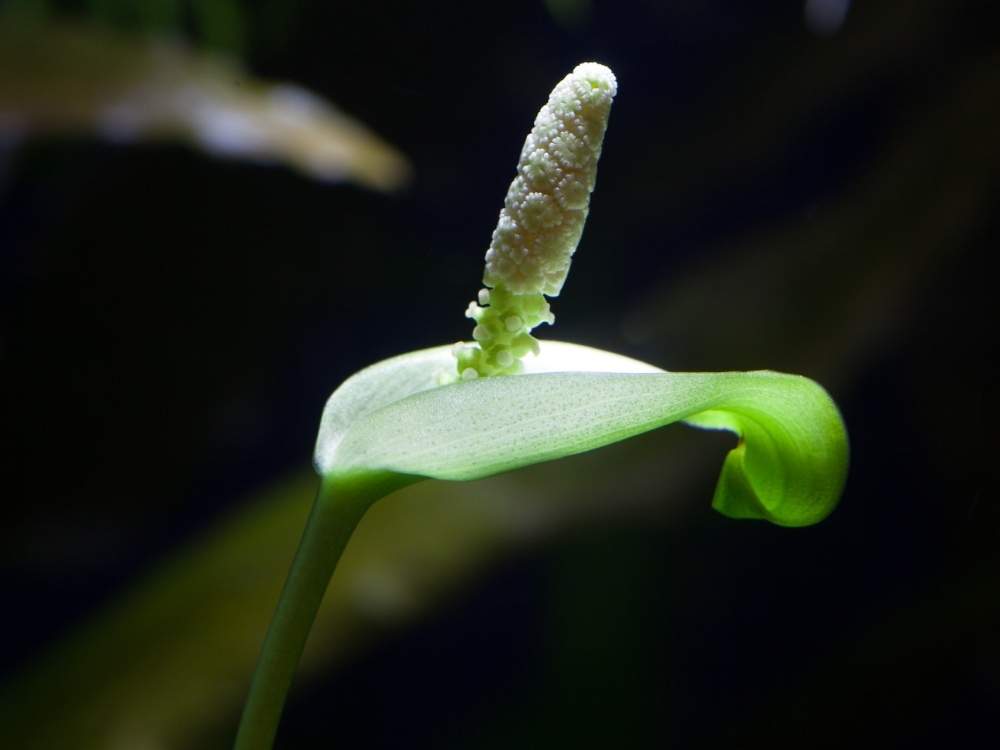
Plant Types That Are Similar to the Anubias Barteri
Biodiversity is a key feature of any healthy ecosystem, including aquariums. You can add variety to your tank by introducing multiple plant species. If you’re looking for resilient plants that are easy to cultivate, like the Anubias Barteri, consider these:
- Java Fern: A staple in home aquariums, the Java Fern’s tough, easy-to-care-for nature is rivaled only by the Anubias. The Java Fern is about the same size as the Anubias Barteri, but its leaves are long and slightly ruffled.
- Vallisneria: Here, we have a classic aquarium background plant. Up to a foot and a half tall, Vallisneria turns the back of your aquarium into a lush jungle scape and provides shelter for the fish within. They need fertilizer to thrive but grow much faster than Anubias plants.
- Cryptocoryne Lutea: At 6-8 inches tall, Cryptocoryne Lutea is the perfect midground plant. Like the Anubias, this is a hardy species that tolerate low-light environments. It can also withstand lower pH levels than most other aquatic plants, but it does need fertilizer to thrive.
Final Thoughts – Anubias Barteri
Whether you are a seasoned aquarist or just starting your first tank, you can’t go wrong with getting an Anubias Barteri. No watering, no soil, and minimal lighting requirements make this a strong contender for the title of the easiest houseplant. You still need to practice routine aquarium care, including temperature checks, pH checks, and tank cleaning. This should be enough to satisfy this plant.
Being a resilient, soil-free species, the Anubias Barteri ships easily, arriving at your door in perfect condition. Get your Anubias Barteri and other aquatic plants right here at Planted Pot!
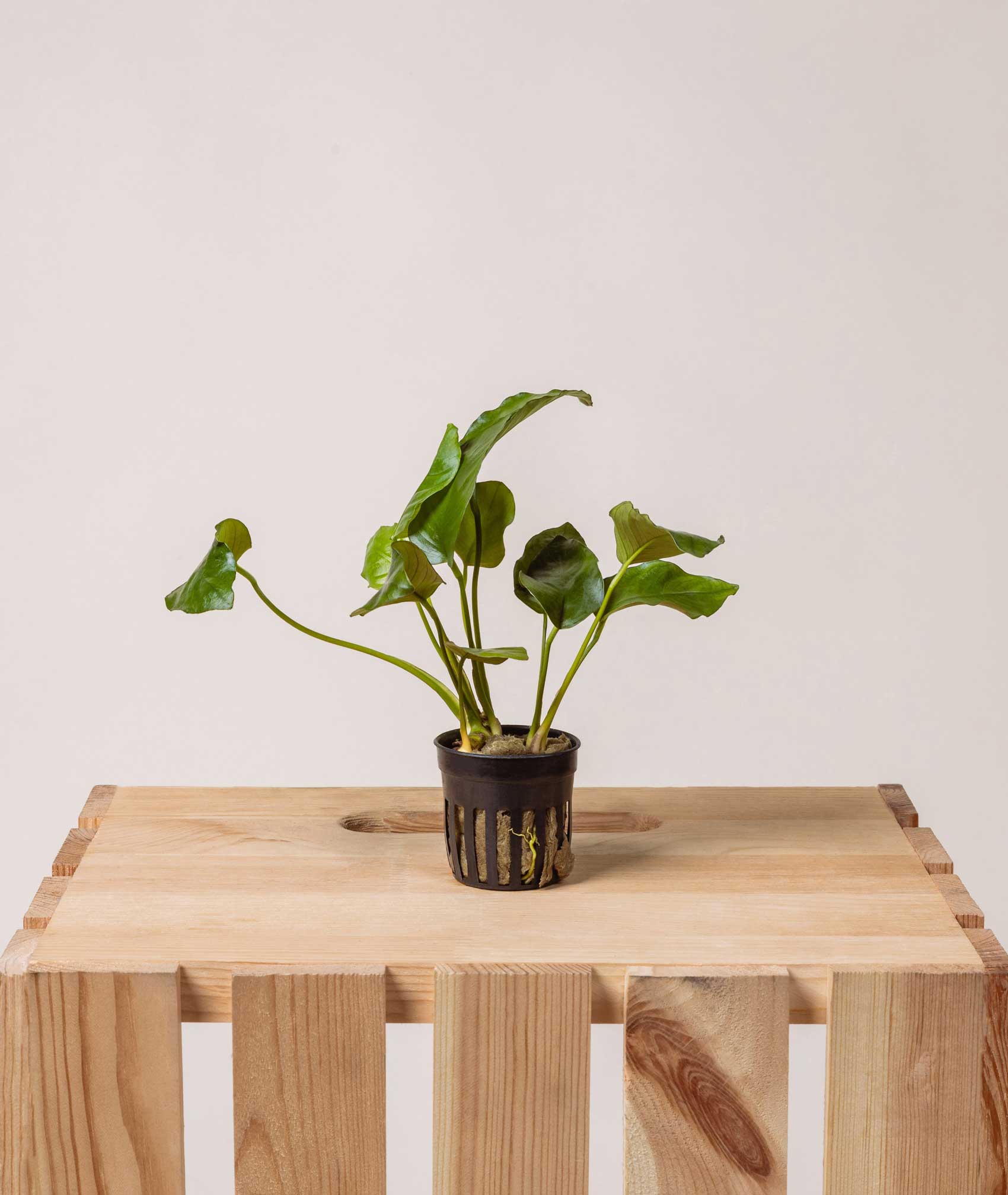


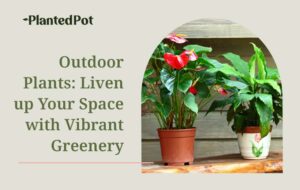
Reviews
There are no reviews yet.